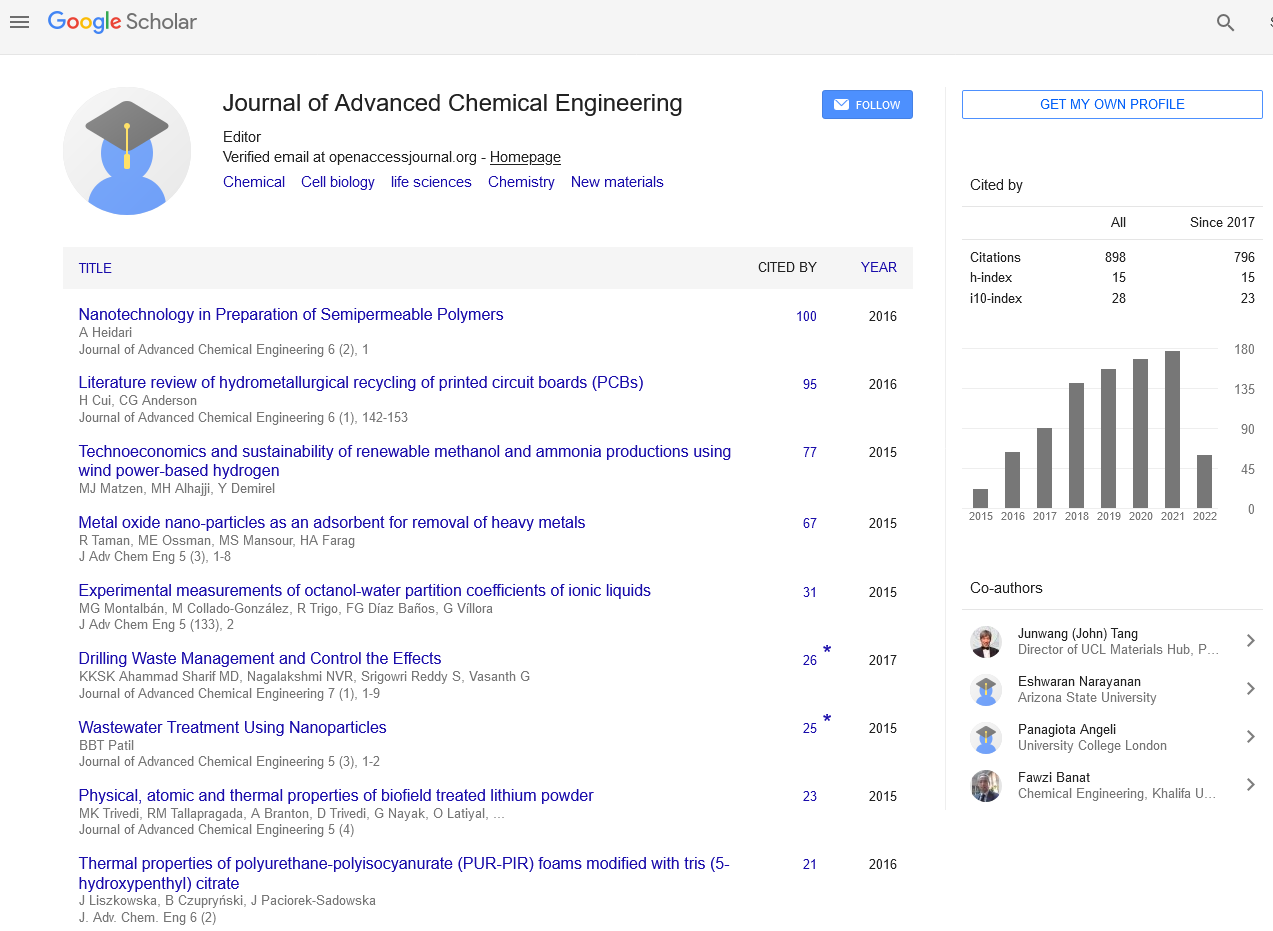Indexed In
- Open J Gate
- Genamics JournalSeek
- Smithers Rapra
- RefSeek
- Directory of Research Journal Indexing (DRJI)
- Hamdard University
- EBSCO A-Z
- OCLC- WorldCat
- Scholarsteer
- Publons
- Geneva Foundation for Medical Education and Research
- Google Scholar
Useful Links
Share This Page
Journal Flyer

Open Access Journals
- Agri and Aquaculture
- Biochemistry
- Bioinformatics & Systems Biology
- Business & Management
- Chemistry
- Clinical Sciences
- Engineering
- Food & Nutrition
- General Science
- Genetics & Molecular Biology
- Immunology & Microbiology
- Medical Sciences
- Neuroscience & Psychology
- Nursing & Health Care
- Pharmaceutical Sciences
Mechanical and thermal properties of bio-composite polymers reinforced with rice and coffee husks
Joint Event on 8th Edition of Biopolymers & Bioplastics & Polymer Science and Engineering Conferences
October 15-16, 2018 | Las Vegas, USA
Michael Lubwama, Sinja Pagel, Vianney Andrew Yiga, Stefan Epple, Peter Olupot and Christian Bonten
Makerere University Kampala, Uganda
Institut fur Kunststoffechnik der Universitat Stuttgart, Germany
Scientific Tracks Abstracts: J Adv Chem Eng
Abstract:
In this study, rice and coffee husks were incorporated with Polypropylene to form bio-composite polymers. Injection moulding technique was employed in their production process. Filler material loading varied between 0-20% and 0-10% for rice husks and coffee husks respectively. Biochemical analysis was carried out to understand the effect of the cellulose, hemicellulose, and lignin in the filler material on the properties of developed bio-composite polymers. Thermal properties were determined using differential scanning calorimetry, chemical properties were determined using a burning test and mechanical properties were determined using a universal testing machine. Overall, the husks had high cellulose contents but low lignin and hemicellulose contents. For coffee husks and rice husks incorporated bio-composite polymers respectively, Young's modulus was between 1780MPa-1967MPa and 1786MPa-2248MPa, tensile strength varied between 28MPa-36MPa and 31MPa-36MPa, elongation at break ranging between 2%-11% and 5%-12%, notched impact strength varied between 1.2 kJ/m2-4 kJ/m2 and 2.2 kJ/m2???3.5 kJ/m2. Filler content had no effect on the transition temperatures. Increasing filler contents led to decreasing crystallization and melting enthalpies i.e. increase in filler content reduced the percentage of the melt-able matrix. Generally, higher filler content led to higher Young's modulus, lower tensile strength, and elongation at break, lower crystallization, and melting enthalpies. No significant correlation was observed between the filler content and the impact strength. High cellulose contents explain why the mechanical properties stayed at acceptable values. Low lignin and hemicellulose contents correspond to improved adhesion between the polymer and matrix materials owing to more exposure of the hydroxyl groups.
Biography :
Michael Lubwama completed his PhD in Mechanical Engineering in 2013 from Dublin City University, Ireland. He is a lecturer at the Department of Mechanical Engineering, Makerere University. He is also the Deputy Center Leader of the Africa Center of Excellence in Materials, Product Development, and Nanotechnology.
E-mail: michaellubwama@gmail.com


